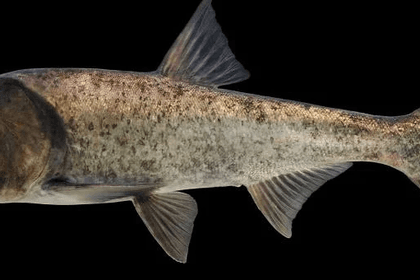Bighead Carp: Biology, Distribution, and Ecological Impact
Bighead carp (Hypophthalmichthys nobilis) is a species of freshwater fish that is native to Asia but has been introduced to several countries, including the United States. Despite its popularity for aquaculture and recreational fishing purposes, the introduction of bighead carp has had negative impacts on the local ecosystems and native species. In this article, we will examine the biology, distribution, and ecological impact of bighead carp.

Bighead carp (Hypophthalmichthys nobilis) is a species of freshwater fish that belongs to the family Cyprinidae. Like its close relative, the silver carp, it is native to Asia but has been introduced to several countries, including the United States, for aquaculture and recreational fishing purposes. However, the introduction of bighead carp has also resulted in negative impacts on the local ecosystems and native species.
Biology
Bighead carp are large, silver-colored fish that can grow up to 1.5 meters in length and weigh up to 45 kg. They have a cylindrical body shape and a large, downward-facing mouth that is adapted for filtering small organisms from the water column.
The diet of bighead carp consists primarily of phytoplankton, but they are also known to feed on zooplankton, insects, and other small aquatic organisms. They are omnivores and have been observed feeding on a wide range of food items, including detritus and algae.
Bighead carp are capable of reproducing in large numbers, with females capable of producing up to 1 million eggs per year. This, combined with their high rate of survival, has allowed the species to quickly establish populations in new habitats.
Distribution
Bighead carp are native to the rivers and lakes of Asia, including China, Russia, and Kazakhstan. However, they have been introduced to several countries outside their native range, including the United States, for aquaculture and recreational fishing purposes.
In the United States, bighead carp have been introduced to the Mississippi River Basin, where they have established populations in several major rivers, including the Mississippi, Illinois, and Missouri rivers. The species has also been observed in several tributaries of these rivers, as well as in some smaller rivers and lakes in the region.
Ecological Impact
The introduction of bighead carp has had a significant impact on the local ecosystems and native species. The species is capable of outcompeting native fish for food and habitat, and their feeding behavior can result in a reduction of the amount of phytoplankton available for other aquatic species.
The introduction of bighead carp has also resulted in the decline of several native fish species, including the gizzard shad (Dorosoma cepedianum), which is a important food source for many sportfish species. The decline of these native species can have cascading effects on the local food web and ecosystem.
Additionally, bighead carp are known to contain high levels of mercury and other contaminants, making them potentially hazardous to human health.
Conclusion
Bighead carp is a large, freshwater fish that is native to Asia but has been introduced to several countries, including the United States. The introduction of bighead carp has had negative impacts on the local ecosystems and native species, including the decline of native fish species and competition for food and habitat. The species is also known to contain high levels of contaminants, making them potentially hazardous to human health. In order to mitigate the negative impacts of bighead carp, it is important to implement effective management and control measures.
No comments yet, be the first to share your thoughts!
Newsletter
Sign up for our newsletter and stay up-to-date on the latest tips, tricks, and techniques in carp fishing. From beginner to expert, our newsletter offers something for every level of angler. Do not miss out on exclusive content, product reviews and fishing reports that will help you catch more carp.
Related Posts
Carp Fishing Fleece: The Ultimate Guide for Anglers
almost 3 years ago
Carp Species and Natural Habitat
almost 3 years ago
Best Tackle Box for 2023: Organize Your Fishing Gear like a Pro
almost 3 years ago
What Does Propolis Do for Fish?
almost 3 years ago
20 Top Carp Fishing Locations in the West Midlands: Lakes and Reservoirs
over 1 year ago
Trakker Unhooking Mat: A Comprehensive Review
almost 3 years ago